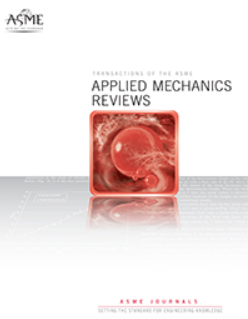飞机结冰条件下多功能CFRP对热对流性能的实验与数值研究
IF 16.1
1区 工程技术
Q1 MECHANICS
引用次数: 0
摘要
提出了一种结合实验和数值的方法来分析飞机结冰条件下多功能平板的对流换热。实验装置包括安装在除冰试验台上的热控制和测量系统。环境温度(θa=[253,283]K)、气流速度(va={0,15,30}ms)和迎角(α={10,30}°)是不同的,并讨论了它们对局部焦耳加热时传热的影响。数值方法利用计算结果,根据牛顿对流换热条件计算对流换热系数。结果表明,该数值模型能较好地反映传热特性。自由对流条件下的HTC为h¯≈2.5Wm2K,强迫对流条件下的h¯≈[10,40]Wm2K,散射较小。在强制对流条件下,HTC的增加对整体传热行为有显著影响,导致材料内部的高温梯度。多功能结构的功能优化将受益于包括应用相关的对流条件,通过结构设计处理产生的温度场。预计用于除冰的多功能结构以及具有类似材料成分的结构储能、变形结构或刚度自适应结构将受益于这一认识。本文章由计算机程序翻译,如有差异,请以英文原文为准。
Experimental and Numerical Investigation of a Multifunctional CFRP towards Heat Convection under Aircraft Icing Conditions
A combined experimental and numerical approach for the analysis of convective heat transfer from a multifunctional flat plate specimen under aircraft icing conditions is presented. The experimental setup including a heat control and measurement system that is installed in a de-icing test bed. The ambient temperature (θa=[253,283]K), air velocity (va={0,15,30}ms), and angle of attack (α={10,30}∘) are varied, and their influence on heat transfer during local Joule heating is discussed. The numerical approach utilises the results to compute the convective heat transfer coefficients (HTC) based on Newton’s convective heat transfer condition. Results indicate that the numerical model represents the heat transfer behaviour with high accuracy. The HTC for free convection was found to hold h¯≈2.5Wm2K and h¯≈[10,40]Wm2K for forced convection conditions with minor scattering. The increase in HTC under forced convection conditions has a significant effect on the overall heat transfer behaviour, resulting in high temperature gradients within the material. The functional optimisation of multifunctional structures will benefit from including application related convection conditions, dealing with resulting temperature fields by structural design. It is expected that multifunctional structures for de-icing as well as for structural energy storage, morphing structures, or stiffness adaptive structures with similar material constituents will benefit from this recognition.
求助全文
通过发布文献求助,成功后即可免费获取论文全文。
去求助
来源期刊
CiteScore
28.20
自引率
0.70%
发文量
13
审稿时长
>12 weeks
期刊介绍:
Applied Mechanics Reviews (AMR) is an international review journal that serves as a premier venue for dissemination of material across all subdisciplines of applied mechanics and engineering science, including fluid and solid mechanics, heat transfer, dynamics and vibration, and applications.AMR provides an archival repository for state-of-the-art and retrospective survey articles and reviews of research areas and curricular developments. The journal invites commentary on research and education policy in different countries. The journal also invites original tutorial and educational material in applied mechanics targeting non-specialist audiences, including undergraduate and K-12 students.

 求助内容:
求助内容: 应助结果提醒方式:
应助结果提醒方式:


